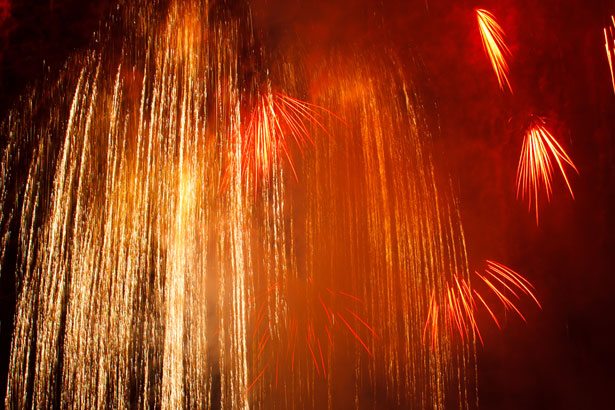Remember, remember, the fifth of November: Alchemy, ignition and stars.
As most of you will know, the fifth of November is remembered as Guy Fawkes night: an occasion where a certain proclivity for pyrotechnics is celebrated. The sonic boom of fireworks will undoubtedly echo through the night, whilst the smell of a bonfire will be all around.
Less well known than the origins of the night is the science behind the showers, spirals and sparks created by a dynamic firework display.
It is generally accepted that Chinese alchemists developed the first fireworks over 2,000 years ago. They unwittingly discovered gunpowder whilst searching for an elixir of immortality. Ironically, this explosive mixture of potassium nitrate, charcoal and sulphur was used primarily in warfare, leading to the death of millions.
The hazardous gunpowder mixture is generally referred to as black powder to account for the varying constituent proportions used in different applications. By changing the composition ratio, pyrotechnic chemists are able to fine-tune the rate and power of explosion. Black powder is used, for instance, to provide both the slow burn of sparklers, and the explosive snap of a firecracker.
The potassium nitrate, present in black powder, is an oxidant: when heated the compound decomposes, releasing oxygen. The oxygen-rich atmosphere then promotes the burning of the sulphur and charcoal fuels. The heat and gas subsequently produced by this combustion reaction provide the propulsion needed to send the firework skyward.
Fireworks themselves consist of a paper shell filled with black powder, a bursting charge which can be thought of as a small firecracker, and numerous combustible pellets, known as stars.
Black powder is used to both launch the firework and ignite the fuse. The fuse burns as the firework gains altitude, eventually igniting the bursting charge inside the shell of the firework. The bursting charge consists of yet more black powder, the eruption bursts the paper shell of the firework and scatters the stars.
The stars found inside the shell of a firework appear like large seeds in a sea of black powder. Stars themselves consist of four components. Like gunpowder, there are oxidant and fuel materials which are responsible for the excessive temperatures and explosive bangs associated with fireworks. However, they also contain metal salts which burn brightly in a variety of colours. For example, lithium carbonate can be used for a red glow, whilst common table salt (sodium chloride) burns with a yellow flame. Lastly, a binder material, commonly starch, is used to hold it all together and keep the star stable.
As the firework explodes, the stars begin to burn and fly out in all directions leaving behind colourful trails of light. The placement of the stars inside the firework shell has to be carefully thought out to ensure that the stars are distributed at the correct angles. This will give the desired aesthetic display, be it a pinwheel, a flower or even a willow-shaped effect.
While it might not be the philosopher’s stone that the alchemists had hoped for, the discovery of gunpowder has certainly proved lucrative. Every year people brave the outdoors to enjoy the warmth a firework display can bring to a crisp November evening.

Comments